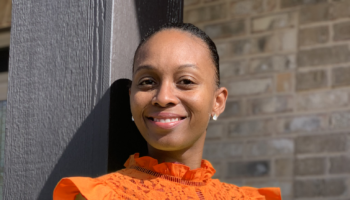We continue with our profiles of some of the 100+ contributors of the Bible and Violence project (under contract with Bloomsbury). (For our earlier introduction to the Bible and Violence Project, see here.) Today we are thrilled to introduce Laura Carlson Hasler and Alexiana Fry.
Laura Carlson Hasler is Assistant Professor of Religious Studies and Jewish Studies at Indiana University Bloomington where she holds the Alvin H. Rosenfeld Chair in Hebrew Bible. She is the author of Archival Historiography in Jewish Antiquity (Oxford, 2020, see here), which argues that the literary form of certain Second Temple texts, such as Ezra and Nehemiah, mimics archival spaces and represents a means of cultural postexilic recovery. She is the author of several recent articles: “The Cited Documents of Ezra-Nehemiah: Does their Authenticity Matter?” (Biblical Interpretation 27/3, 2019, see here) calls into question the usefulness of categories like “fabrication” and “authenticity” in biblical scholarship; “Persia is Everywhere Where Nothing Happens: Imperial Ubiquity and Its Limits in Ezra-Nehemiah” (Bible & Critical Theory 16/1, 2020; open access) argues for a new way of reading representations of empire in the ancient world; “Poor Circulation: Embodied Economics in Haggai, Malachi, and Zechariah 1–8” (Journal of Biblical Literature 141/3, 2022, see here) contends that in the texts of postexilic prophets Judean collectivity is made legible through concepts of exchange and sensation. Laura is writing one of the chapters on Violence and the Minor Prophets.

I am writing about violence in the Minor Prophets, focusing on Haggai, Zechariah, and Malachi. Though these texts may not be the first that come to mind when considering violence in the Bible, they are riddled with representations, explanations, and expectations of bodily pain. In this chapter, I will use the Second Temple prophetic texts to explore the ambiguities that haunt the term “violence” – especially fantasies of divinely-orchestrated coercive harm. Does harm presuppose violence? How can we measure coercion? And do textualized or future violences count as “real” violence, anyway? Deriving an emic understanding of violence from these texts discloses the term’s rich instability and demands that readers grapple with their own assumptions about agency, power, textual representation, and the body.
__________________________________________________________________________
Alexiana Fry is research fellow at Stellenbosch University (South Africa). She recently finished her PhD in Old Testament/Hebrew Bible, focusing her research on the intersections of migration, trauma, and feminism. She is currently finishing her first monograph on Speech Act Theory and trauma, provisionally entitled Through the Middle of the Thick (Lexington Press). Alexiana is writing the chapter on Violence, Trauma, and the Bible. She wants to add that she is indebted to her two pugs for their snuggles, which help her to write.

We are living in a time where biblical studies and wider society both seem finally to be catching up with recognizing the profound impact and implications of trauma on our lives and our interpretations of experiences and texts. While trauma in and of itself is horrific, it is also quite mundane in that it can and does affect anyone, regardless of location, time, or identity. Shoshana Felman speaks of moving from an “era of testimony” to an “era of trauma,” which I perceive as bringing about a blurry mess of sorts, where we are desperate to be understood and make sense of a society that is very much in flux and transition.
Writing this chapter, then, is going to be difficult. It will aim to provide an introduction and invitation of sorts into what could be in the future of the field of trauma-informed biblical studies, looking forward while acknowledging and examining traces of trauma in ancient texts that continue to be interpreted in the present. We’re only just beginning to better understand trauma, and the possibilities of doing so are utterly fascinating to me (and, I hope, you).
I aim to provide a definition of trauma and examine trauma within the socio-historical world of biblical texts, in terms of the words being read, and with respect to embodied readers in the present. Contexts of the past, trauma language, and the embodied present: all are potential sites of violence, and impact our interpretation of trauma. And this is just the beginning!
What thrills me most is the prospect of exploring trauma and violence in the round, and, once they are better understood, to imagine a softer, kinder, healing world. My hope is this will facilitate something of a radical departure from where we currently are, including in the academy, and in biblical studies. I’m excited to see where these explorations take me.






